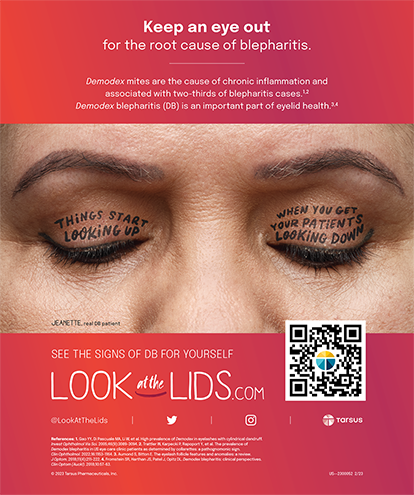Customers of medical services, like the consumers of any service, expect to be treated well and to receive excellent care. The benefit for ophthalmologists is that we have access to new technology that helps us to deliver better care to our patients. Even if you practice in a managed care setting, your ability to satisfy your patients and deliver efficient care will determine your ability to maintain your contracts and ask your patients for larger copays.
SEE THROUGH YOUR PATIENTS’ EYES
I could write a book about what contributes to a practice’s successes and failures. To fully understand our patients’ experiences, we must see our practices as they do. I suggest walking into your practice as a patient would. Enter the front door. Take in the aroma, sounds, and sights of your reception and waiting areas. Scrutinize your surroundings with a critical eye. Are the magazines stacked neatly? Is the carpet clean? Is the furniture worn and faded? Is your staff greeting patients or hiding behind a glass window or counter? Does the office smell like it has been poorly cleaned or like sanitizer? Does a previous patient’s perfume linger? Is the seating area well lit so that you can read? Is Wi-Fi available?
Rate what you observe, and think about your customer score. Is it 1 (poor) or 10 (excellent)? Once you have finished critically observing the reception and waiting area, assess the rest of a patient’s typical experience at your practice from that viewpoint. As you evaluate each step, look for ways to introduce efficiency and to anticipate your patients’ needs.
RESPECT PATIENTS’ TIME
Respecting patients’ time is integral to good customer service. Do you know how long it takes you and your staff to deliver care? Are you efficient like Starbucks or more laidback like the old mom-and-pop coffee shops that have largely disappeared? With mobile technology, customers have an outlet for their opinions. Are they telling the world how poor your practice is because they feel you are wasting their time? Online reviews speak volumes.
TREAT PATIENTS AS CUSTOMERS
As the practice of medicine changes, ophthalmologists are being forced to adapt in order for their practices to thrive. All physicians are dealing with decreased reimbursement for their efforts, growing demand for their services, and increasingly complex regulations.
Patients are being forced by insurance companies to pay more for your services. At the same time, technological advances enable us to deliver better care faster, which enhances the quality of our patients’ lives. Some of these services are outside the insurance realm. The net effect is that patients are being asked to pay more all the time. To a practice, patients are therefore also customers. Patients receive medical care, and customers purchase a service or commodity.
Physicians and their staffs, however, have not generally treated patients as customers. I recently saw a patient for ocular issues who resided in another city and had a brain tumor. I tried to get her an appointment with a neuro-ophthalmologist that day. Although several neuro-ophthalmologists were in the office that day, which happened to be near a holiday, I was told to send the patient to the emergency department, but such services were not what this patient needed.
Is limiting patients’ access to care and treating them as numbers appropriate? Do we need to consider the customer’s experience as a method by which to enhance our maintenance of contracts and/or our ability to ensure that patients will provide their copays or pay for testing/treatment not generally covered by insurance?
ENGAGE AND LISTEN
Starbucks continues to astound me. So many people purchase the company’s products daily, and change within the chain is constant. This highly successful establishment has found the formula for increasing its products’ availability to customers. Obviously, coffee is not as precious as eyesight, but Starbucks offers a successful model for physicians on how to engage customers.
I believe we should all improve the quality of customer service at our practices and change the face of medicine one doctor at a time by listening to our patients. We must evaluate everything we do from their viewpoint. Patients have a choice on where they seek eye care. If you and your practice are to thrive, they will have to experience the difference! n
Sandy T. Feldman, MD, MS
• medical director, Clearview Eye & Laser Medical Center, San Diego, California
• sfeldman@clearvieweyes.com


